By Lawrence Haywood, Mar 15, 2025
Depending on whether you’re hearing about Cat Ba or Phu Quoc, Vietnam’s two largest islands, in the north or the south of the country, you’ll probably hear that one is an absolute island paradise and the other is a gigantic floating garbage barge. In actual fact, both of these islands are some of the most beautiful in Asia, but the strength of the north/south divide is still very apparent in Vietnamese attitudes to their own country.
Those in the south will sing the praises of Phu Quoc Island, Vietnam’s still-underrated beach destination, with over 10 stunning white sand beaches and a wealth of gorgeous jungle. Whereas, Vietnamese in the north like to talk about Cat Ba Island and the verdant tropical scenery that carpets the island and its soaring limestone mountains.

Choose Cat Ba or Phu Quoc Island
The merits of both are plain for all to see upon arrival, but if your Vietnam tours are shorter than you would like, and you only have the time to visit one of Vietnam’s idyllic islands, then this article will go some way to answering whether you should visit Cat Ba or Phu Quoc.
The first aspect we will look at in this eternal question is both islands’ beach scenes. Vietnam is finally becoming recognised for its world-class beaches and many of these can be found on the islands of Cat Ba or Phu Quoc.
With its largely mountainous coastline, Cat Ba Island is mainly buffered against the sea by undulating hills rather than flat stretches of sand. That is not to say that Cat Ba has nothing in the way of white-sand paradise, however, and visitors on a Vietnam family tour can find much in the way of family-friendly relaxation time on its small but beautiful beaches. The trio of Cat Co 1, 2 and 3 are the island’s most popular beaches, all located in the southeast of Cat Ba and all connected via a beautiful and simple cliff-top walkway.
As of late 2018, Cat Co 1 is a gigantic construction site and Cat Co 2 is a tiny spit of sand not really worth a second glance. Cat Co 3 saves the day, however, as its small strip of sand opens up beautifully onto the karst-speckled ocean ahead of it. Its ease of access means that Cat Co 3 enjoys a lot of attention, but quieter and more beautiful beaches can be found just outside the main town at Tung Thu Beach and the hippy-inspired Woodstock Beach.
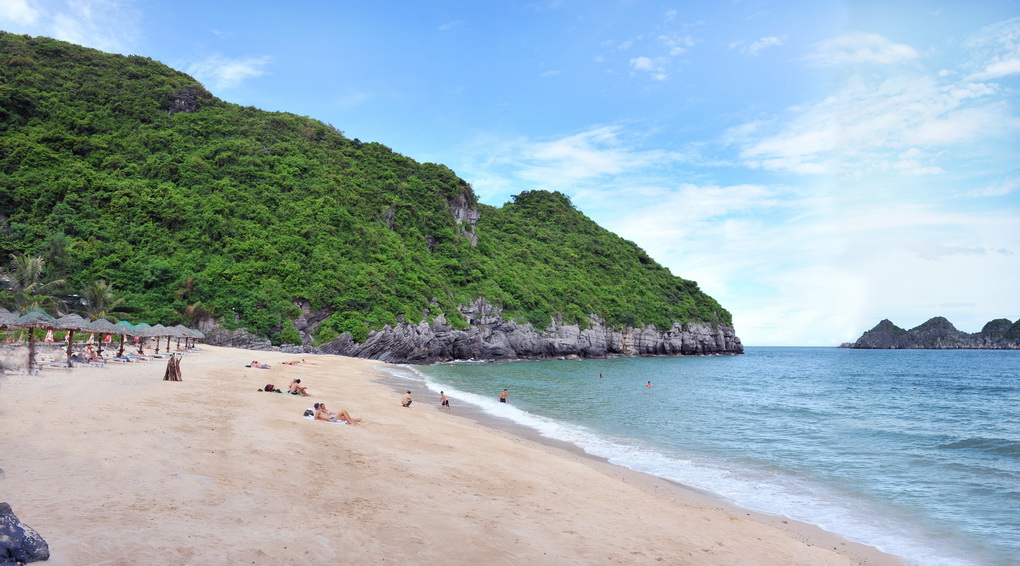
The crystal sand of Cat Ba Beach
It’s hard to know where to start with Phu Quoc when it comes to beaches. A multitude of popular and utterly secluded sand covers the coastline, with more and more hotel and restaurant companies coming to grips with the island’s growing worldwide appeal. This means that while its beaches are gorgeous and contain the perfect ratio of bordering palm trees to the glittering ocean, many are earmarked for large-scale resorts, diminishing the true castaway atmosphere that Phu Quoc once boasted. Come there from November to April - best time to visit Phu Quoc to experience its most beauty!
Nevertheless, the choice and quality of beaches here are stunning, and offerings like Ganh Dau, Rach Tram, Rach Vem and Thom beaches still contain the aura of a sleepy fishing village completely off the tourist trail. For convenience, Long Beach is the enormous 20km stretch that portions out much of its sands to private resorts, but still has many areas of quiet beauty open to the public, while Vung Bau also offers splendour in abundance but with a relatively high risk of crowding.
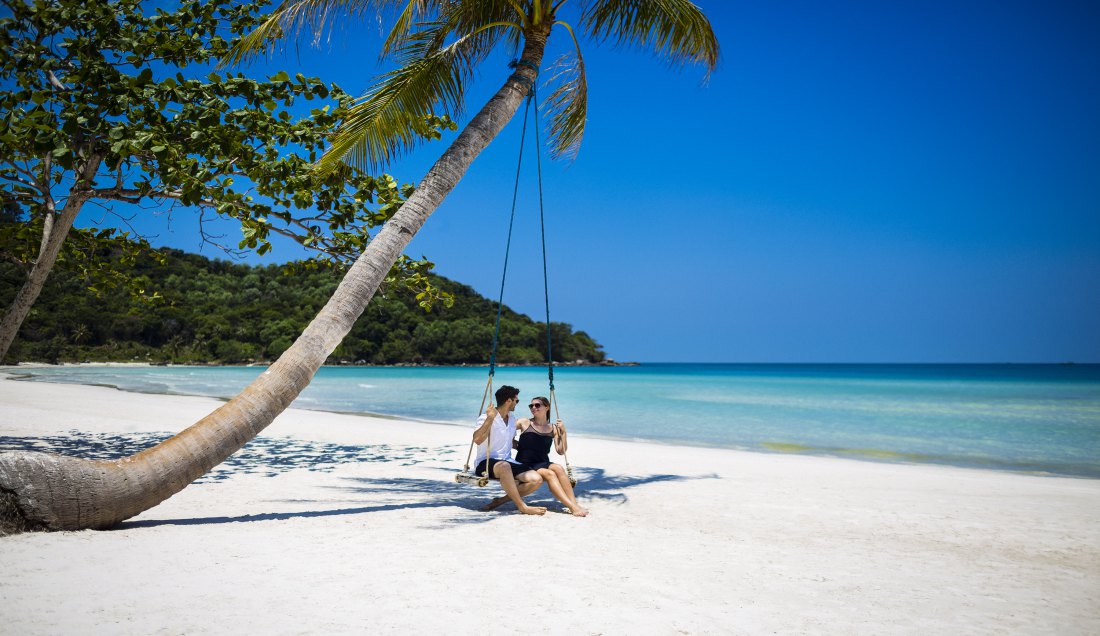
Spend your leisure time at Phu Quoc Beach
>> Should you visit Cat Ba or Phu Quoc for the beaches?
• Though both make for excellent stops on a Vietnam beach holiday, it’s impossible to refute that the quality and quantity of Phu Quoc’s beaches are superior to those of Cat Ba’s.
Tree-topped limestone mountains cover much of Vietnam and its two biggest island escapes aren’t excluded from that. This evocative type of scenery is found much more commonly in the north than in the south of the country, but southern Phu Quoc still has a beautifully verdant interior to rival that of northern Cat Ba’s.
One glance at a map will show you that Cat Ba Island is situated right in the middle of Halong Bay. This should tell you all you need to know about the landscape to expect here, as Halong Bay is known throughout the world for its karst towers, clad in lush green trees and soaring high above the cruises that pass underneath it.
With more space for foliage to grow, it could be said that Cat Ba’s mountains are even more beautiful than Halong Bay’s, as they soar higher and have the space to create vast valleys and majestic ridgelines, best viewable from a motorbike ride along its glorious inland road. One of the best ways to see the rolling green mountains of Cat Ba is to take a visit to the national park and the short trek up to Ngu Lam peak, a roughly 2-hour return trek that grants visitors outstanding views of the jagged mountaintops above.
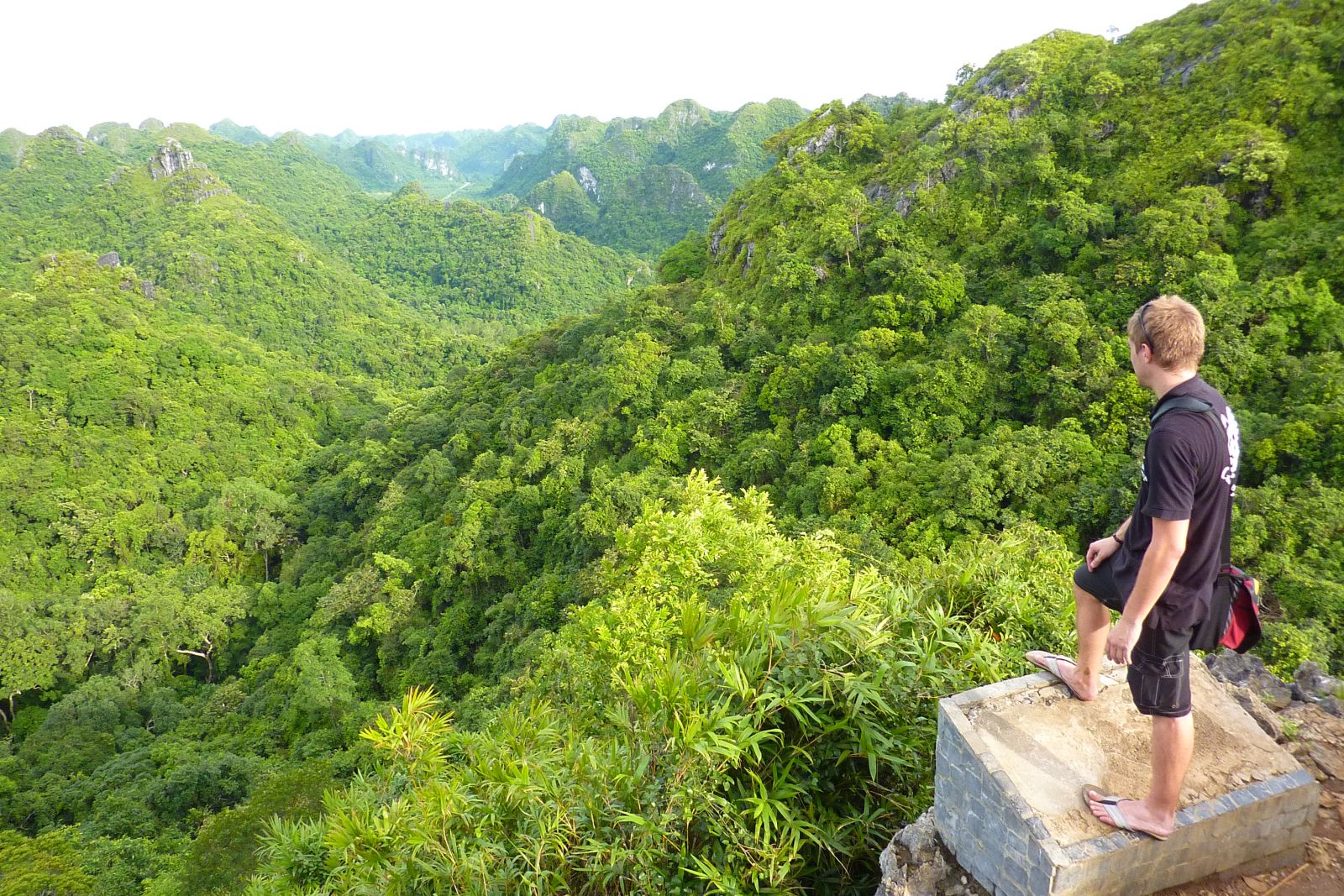
Cat Ba Island trekking
As part of the region comprising the largely flat Mekong Delta, Phu Quoc Island bucks the trend by containing marvellous mountain ranges, most of which are centred around the Phu Quoc National Park in the northeast of the island. Climbing the mountains here is one of the best things to do in Phu Quoc for people who need more stimulation than simply relaxing on the beach, but the wealth of choice here is not all that impressive. The island’s main hike leads to Chua Mountain, which is about 650m above sea level, providing decent views of a few other of Phu Quoc’s rising mountains, but not really enough to hold a candle to Cat Ba’s Ngu Lam peak, which stands about 350m taller.
>> Should you visit Cat Ba or Phu Quoc for the mountains?
• This is a deal-breaker for many outdoor enthusiasts choosing between Cat Ba and Phu Quoc, but Cat Ba has to take the crown here for its consistently beautiful ranges.
Visitors to either of Vietnam’s best islands might be surprised to discover that both are part of archipelagos, offering more gorgeous scenery amongst an incredibly quiet atmosphere across their ranges of smaller islands and islets. Many of these are available for visiting on either a charter boat or a public ferry.
It is telling of Cat Ba’s chances in this category that it is actually the largest island out of 367 comprising the ‘Cat Ba Archipelago’. It also helps that the entire collection of islands was designated protective status by UNESCO in 2004, triggering a deeper urge in travellers to visit some of the accessible spits of land around its mainland. Mainly these islands comprise the stunning Lan Ha Bay, one of the two sister bays to the neighbouring Halong Bay, which tourists can visit on a day trip, 2-day or 3-day Lan Ha Bay Cruise.
Lan Ha Bay Cruises are quieter than those in Halong Bay, as the destination has still not reached its full tourist potential, but when it does, visitors can take solace in the fact that Cat Ba’s other islands, such as Monkey Island, offer excellent and quiet alternatives. The rest of the archipelago is decked with the same mountain and beach scenery as Cat Ba’s main island, with much fewer tourists and minimal resorts in operation.
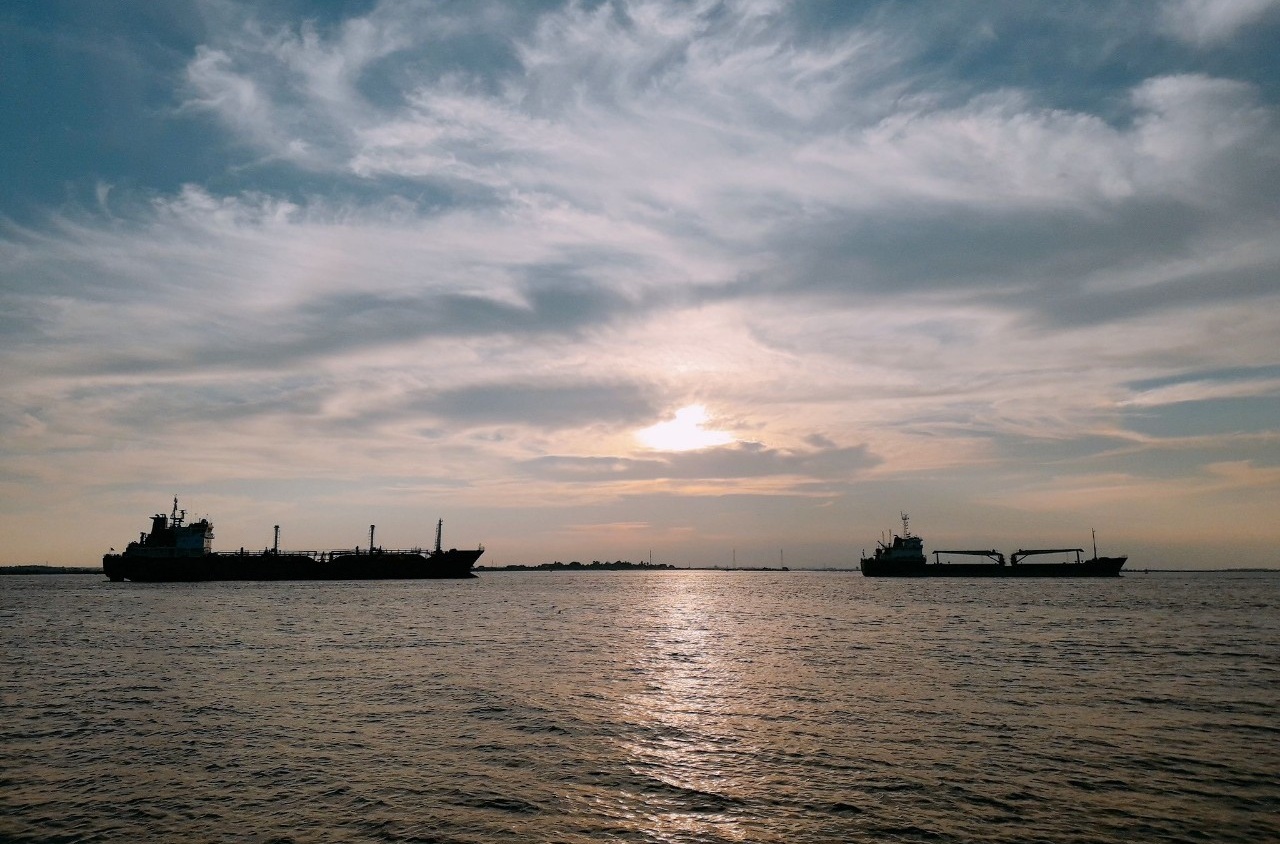
Lan Ha Bay Sunset
What is commonly referred to as the An Thoi Archipelago offers a wonderful escape from the occasionally congested beaches on Phu Quoc, all accessible across the splatter of its 14 islets lying in the Gulf of Thailand. These contain Vietnam’s quintessential paradise scenes, with all islands remaining completely uninhabited. The decision to stay in Cat Ba or Phu Quoc often hinges on the reclusive nature of such islands, so it is definitely worth noting that tours visiting the islands on any given day can sometimes spend hours at a time in the waters without seeing another tourist. Completely clear water, schools of colourful fish and nebulous clouds of vivid coral are very much on the agenda with a visit to the An Thoi Archipelago, all islands of which can be accessed on a charter boat cruise or a public tour.
>> Should you visit Cat Ba or Phu Quoc for the island-hopping?
• Choosing between the gorgeous Lan Ha Bay and the idyllic An Thoi archipelago is incredibly difficult, but Phu Quoc should take this one for the true castaway feeling that island-hopping around its archipelago can bestow.
This may not be a consideration for many travellers wondering whether they should visit Cat Ba or Phu Quoc, but the two islands’ historical sites offer a wealth of interesting alternative activities. As with much of the rest of Vietnam, Cat Ba and Phu Quoc were sleepy backwaters until the First Indochina and Vietnam wars, which catapulted them both into utility and meant that development across the islands spread quickly.
The two historic sites of Cat Ba are set in gorgeously verdant surroundings, so even visitors not interested in the island’s modern history can appreciate the wealth of magnificent scenery that is available to view from it. This is mostly the case with Cannon Fort, an old French artillery station that was eventually seized by the Vietnamese and used to shell the French troops as they retreated from the island. The fort is placed high above the main town but is easily accessible from it, meaning it has become one of the top things to do on Cat Ba for anyone looking for panoramic views of the limestone seascape and the various contoured coves around it.
Cat Ba’s other historical attraction, its Hospital Cave, offers more inland views from the cave mouth and exit, stretching over rolling jungle with quaint village houses dotted between. During the Vietnam War, a fortified hospital was built into this cave and attended by thousands of troops and staff, all completely unbeknownst to the Americans.
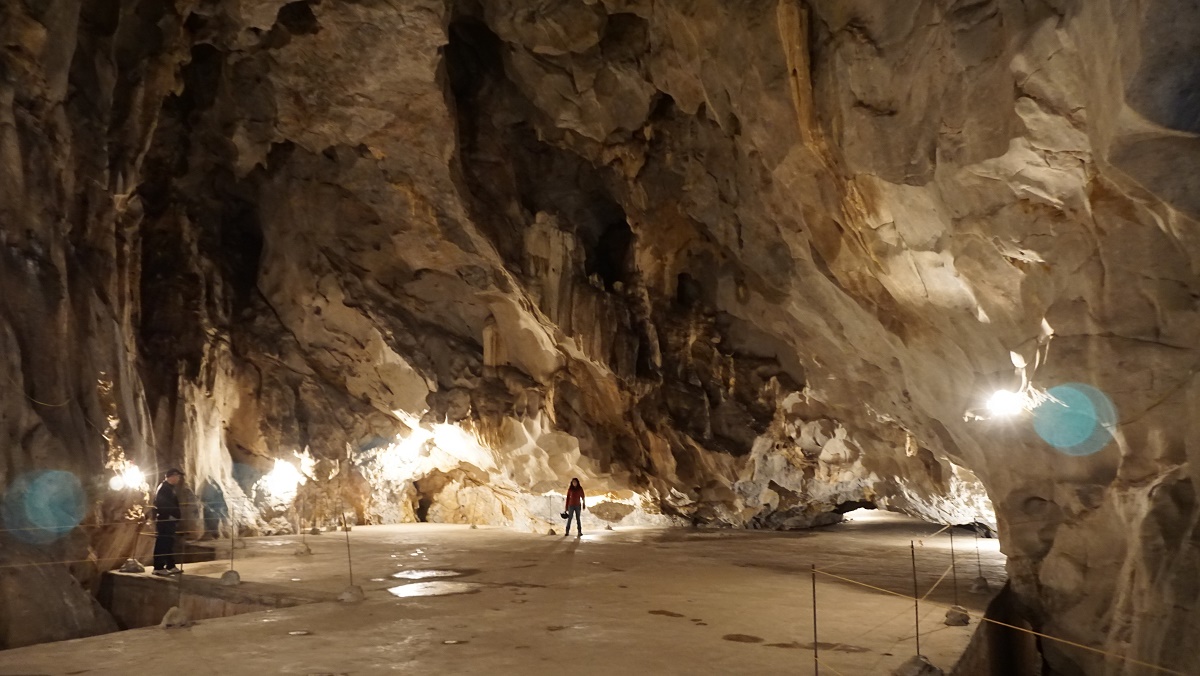
Hospital Cave - An attraction with historical values
Representing the losing side of the Vietnam War, Phu Quoc was an important penal colony for South Vietnam, where North Vietnamese troops and revolutionaries were imprisoned and treated horrendously badly. Phu Quoc Prison, at its height in 1973, housed 40,000 communist Vietnamese, and at some points, the security was so heavy that there was a guard for every two prisoners. The alternative name of the prison was Coconut Tree Prison, which quite effectively detracted from some of the brutal torturing taking place inside, the most infamous of which was time spent in the cramped ‘tiger cages’.

Phu Quoc Prison
>> Should you visit Cat Ba or Phu Quoc for the historical sites?
• As the island with the markedly less depressing history, and the location of two historical sites that were crucial in repelling Vietnam’s enemies, Cat Ba Island takes this one.
Despite all of the natural splendour and history, a crucial factor to consider when deciding whether to visit Cat Ba or Phu Quoc is how easy it is to reach either destination. Both islands have been somewhat thrust into the tourist limelight in the 21st century and many of the transport links between them and the mainland are still attempting to catch up with the new influx of visitors.
For tourists from Hanoi, Cat Ba Island is the perfect weekend escape or a 2 to 3-day excursion on a northern Vietnam tour. The island is part of Hai Phong province, lying 150km away, reachable in about 3.5 to 4 hours from Hanoi with a bus and ferry combination ticket. From Hanoi, these tickets shouldn’t cost more than 300,000 VND ($13 USD) for a public transfer and 2,200,000 VND ($95 USD) for a 4-seater private transfer. This is by far the best way to get to Cat Ba from Hanoi, as the alternative transport such as the train and aeroplane takes longer, costs more and requires more hassle. Hai Phong’s Cat Bi airport does open up visits to Cat Ba from the rest of the country, but as most tourists will go to Hanoi anyway, it would make more sense just to travel on a bus from the capital.
Phu Quoc’s touristic interest is ever-expanding, meaning it needs a transportation system to match. At the moment, an airport and a ferry are the two options to access this increasingly popular southern Vietnam tour destination, but construction to bring more tourists to the island is well underway. By far the most popular and easiest way to get to Phu Quoc is via plane, with the island’s international airport able to connect arriving tourists to most beachside resorts within an hour. One-way tickets from Ho Chi Minh City can be as cheap as 550,000 VND ($23 USD) to 1,300,000 VND ($51 USD), while one-way tickets from Hanoi can be 1,200,000 VND ($52 USD) to 2,200,000 ($86 USD), but both are subject to regular change depending on whether the time of your visit coincides with the peak season or the quiet season.

Phu Quoc ferry
Ferries represent a cheaper but more labour-intensive journey, leaving from the Mekong Delta towns of Rach Gia or Ha Tien, available as a slow or fast option. Tickets for the slow ferry are a universal 185,000 VND ($8 USD), taking 3.5 hours from Ha Tien, while fast ferry tickets are around 350,000 VND ($16.50 USD) from Rach Gia and 230,000 VND ($10 USD) from Ha Tien. Neither Rach Gia nor Ha Tien is particularly easy to reach from Ho Chi Minh City, so most tourists opting for the ferry stay one night in the capital of the Mekong Delta, Can Tho, before their departure the following day.
>> Should you visit Cat Ba or Phu Quoc for their ease of access?
• Both destinations have constantly improving transport links and both will be very easily accessible in the future, but for now, Phu Quoc has the biggest range of interesting choices.
It’s incredibly hard to pick an overall winner between Cat Ba and Phu Quoc islands; the right destination for you really depends on the style of your holiday. If travelling independently and looking for a more active time in the mountains and jungle, then Cat Ba is probably your best bet, but for those looking for a more relaxed time on the beach with many family-friendly destinations and the convenience of multiple resorts, then Phu Quoc will be your perfect Vietnamese island paradise.
Whether you want to visit either Phu Quoc or Cat Ba or both, contact Incredible Asia Journeys to get a detailed consultation!